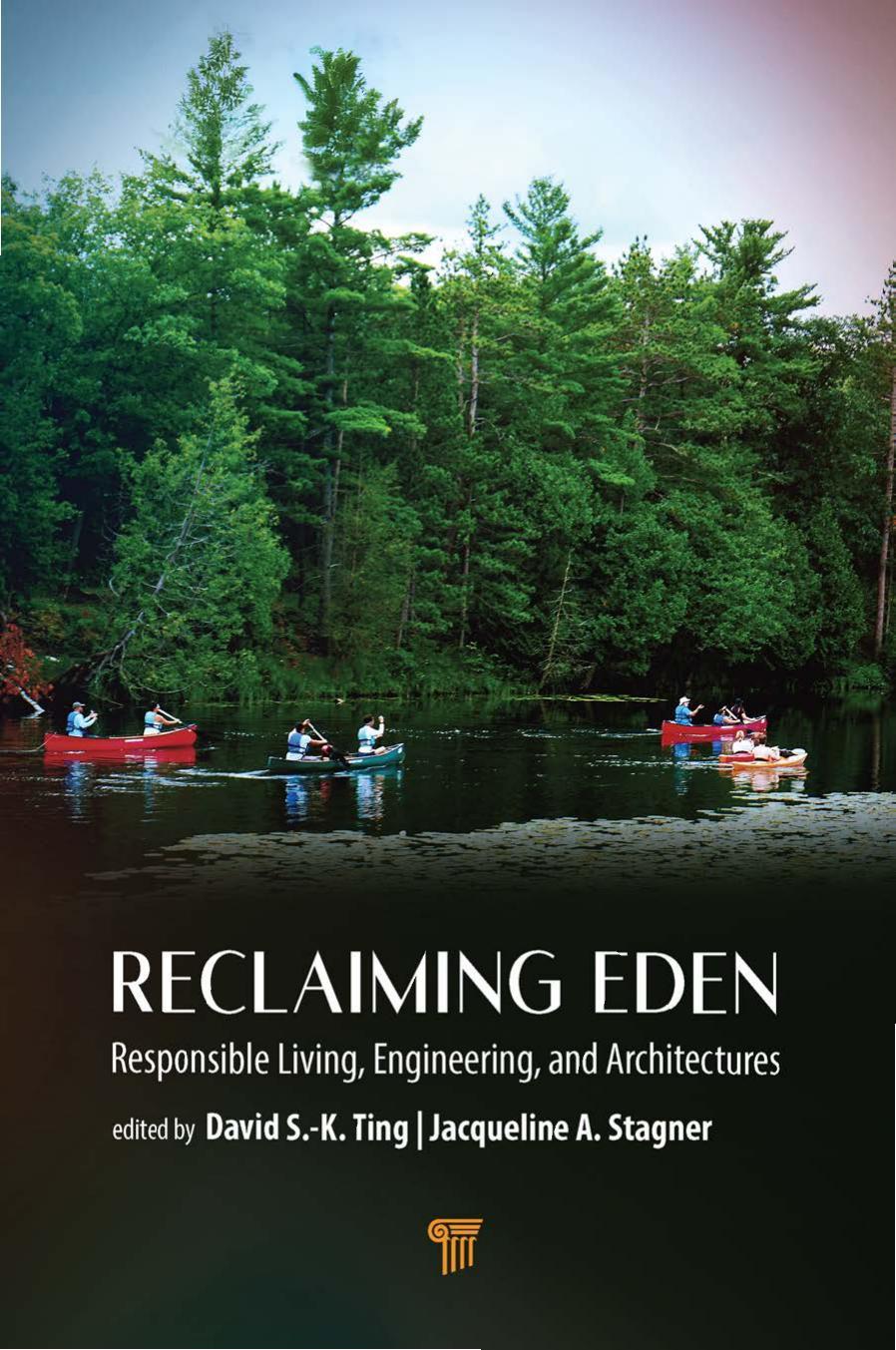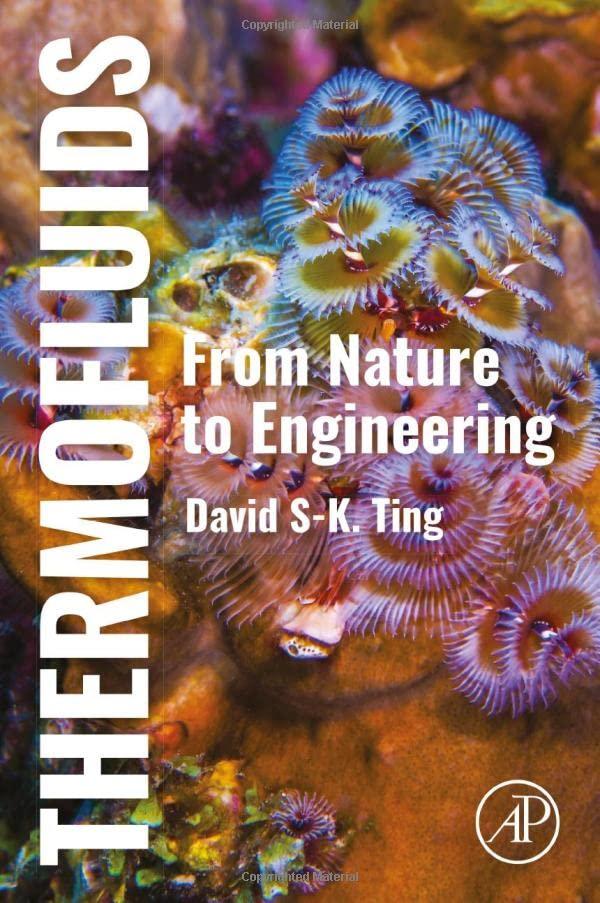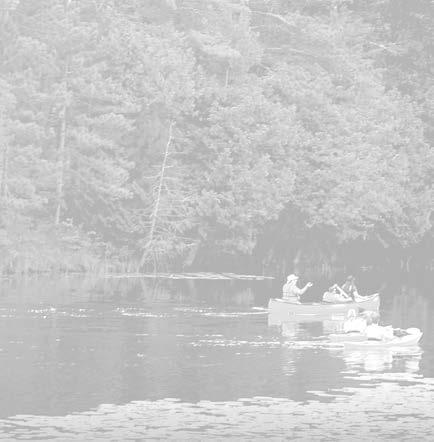Dedication
To everyone who strives to reclaim Earth to its original beauty and tranquility.
4.
5.
Xi Wang, Paul Henshaw, and David S.-K. Ting
4.1
4.3
4.4
4.5
Shahla Choobchian, Mahnaz Ghorbannejad, Mohammad Shokati Amghani, and Hossein Azadi
5.1
5.3
5.3.2.1
5.3.2.2
5.3.2.3
5.3.2.4
5.4
5.4.1
5.4.2
5.5
5.5.1
5.5.3
5.5.4
5.6
6.
7.
Mohd Sahil Akhtar, David S.-K. Ting, and Jagannathan T. Kalathi 6.1
Saumili Jana, Rajaram Lakkaraju, Jacqueline A. Stagner, and David S.-K. Ting
7.1
7.5 Thermal Regulation
7.5.1
7.5.1.1
7.5.1.2
7.5.1.3
7.5.1.4
7.5.1.5
7.5.1.6
7.6
7.6.1
7.6.2
7.6.3
7.7
7.8 Concluding
8. Evolutionary Structurally-Sound-Design-Process of Dovetail Massive Wooden Board Elements as a Sustainable and Environmentally Friendly Solution
Hüseyin Emre Ilgın, Markku Karjalainen, and Sami Pajunen
8.1
8.2
8.3
8.5
8.6
9. Performance Assessment of Electric-Powered Food
Joseph Abutu, Emeka Daniel Oruonye, Mohammed Abubakar, and Abdullahi Auwal
9.2.2
10. Coral Reef Ecosystem Enhancement in Singapore’s Highly Urbanized Port
Chin Soon Lionel Ng, Shu Qin Sam, Yuichi Preslie Kikuzawa, Tai Chong Toh, and Loke Ming Chou
Preface
Life on Earth is both challenging and beautiful. Reclaiming Eden is about responsible living, engineering, and architectures, aiming to mitigate environmental deterioration by reclaiming land around the world to an ecologically sustainable stage. These endeavors will enable us to pass forward a beautiful tomorrow for our grandchildren in the long run, and our children and ourselves in the immediate future. Ting and Stagner ascertain that it makes splendid sense to reclaim Eden in Chapter 1, “Eden: It Makes Splendid Sense to Reclaim.” As Earth dwellers, we have the responsibility to tend this garden. While they are not often broadcast by major media, there have been a few success stories about reclaiming Eden-like gardens in places around the world. Understanding the outstanding challenges can better position us to further the restoration on a worldwide scale. A comprehensive disclosure on living responsibly is provided in Chapter 2, “Living Responsibility: Adapting Waste Reduction to Reclaim Eden?” Reader rightly conveys that the Garden of Eden was initially stewarded by two unclothed ageless human custodians without any mention of waste. Not too many generations later, waste has become a serious issue to be reckoned with. Population growth is one cause, and new waste associated with renewable energy is another. Waste management and reduction should be enunciated, and efforts must be invested now before the problem goes out of control. Recycling is the second most effective means of reducing waste, after reduction. Balo, Boydak, and Sua furnish “HarborHouse Design with Recycled Insulation Materials for Sustainable Development,” as Chapter 3. They show that proper utilization of building information modeling, along with building energy modeling, can conserve money, time, and resources, furthering sustainable and green constructions. Improving the efficiency of the many man-made systems for sustaining everyday living is also critical in Reclaiming Eden. Integrating two or more renewable
energy systems can better harness the available free energy. Photovoltaic-thermoelectric hybrid power systems are such an example. Three aspects of photovoltaic-thermoelectric hybrid power systems—optical design, heat transfer, and geometric structure—are discussed in detail by Wang, Henshaw, and Ting in Chapter 4, “Recent Progress in Photovoltaic-Thermoelectric Hybrid Power Systems.” Choobchian, Ghorbannejad, Amghani, and Azadi present “Barriers to the Deployment of Renewable Energy Technologies” in Chapter 5. The case study on the situation in Iran identifies 28 barriers. It is not surprising to see that politics and the regulatory framework are the main factors in preventing renewable energy penetration. Political will is a must if we wish to bring back Eden to Earth. Creatures such as birds are not subjected to political and regulatory hindrances when it comes to effective harnessing of renewable energy. In Chapter 6, “Solar Enhanced Soaring: Tapping into Ambient Solar Energy for Optimized Airfoil Performance,” Akhtar, Ting, and Kalathi reveal the effect of solar heating of one surface of an ideal bird’s wing represented by an NACA0012 airfoil. Detectable changes in the lift and drag coefficients can be achieved with a moderate 10°C temperature difference between the two surfaces. Thus, it is clear that, to green life on Earth, we can benefit from a better understanding of the multitude of intelligently designed creatures and creations in the natural world. Talking about imitating nature, Jana, Lakkaraju, Stagner, and Ting present “Thermal Regulation due to Vertical Greening Systems: A Review,” in Chapter 7. Incorporating natural vegetation on man-made buildings can simultaneously save energy and soothe our souls. The effectiveness of vertical greening systems, however, is a challenge to deduce. Some promising performance indicators are proposed, pending future studies to solidify the evaluation standard. Wood can save mankind from many troubles, for example, the Ark that kept Noah and his companions afloat was constructed from gofer wood, according to Genesis 6:14. Instead of adhesives and metal fasteners to join pieces of wood, dovetail joinery can be employed. This is the topic of Chapter 8, “Evolutionary Structurally-Sound-Design-Process of Dovetail Massive Wooden Board Elements as a Sustainable
Preface xv
and Environmentally Friendly Solution,” authored by Ilgın, Karjalainen, and Pajunen. The integration of dovetail-based components in non-glued and non-metal wooden boards is a sustainable path to advance tomorrow’s architectures. While it is well suited for buildings, wood is not the best fuel for cooking because of emission issues, even though, as a biofuel, it is carbon neutral. Abutu, Oruonye, Abubakar, and Auwal promote the use of electricity for cooking in Chapter 9, “Performance Assessment of Electric-Powered Food Roasting Machine.” They constructed an electric powered food roasting machine using local materials, mostly scrap, in Jalingo, Nigeria. The ease of control allows precise control of the cooking process, which varies depending on the amount and type (moisture content) of the food. There can be no Garden without soul-soothing waters. This volume concludes with a highlight of improvements to a coral reef, “Coral Reef Ecosystem Enhancement in Singapore’s Highly Urbanised Port,” as Chapter 10 by Ng, Sam, Kikuzawa, Toh, and Chou. The densely populated city-state of Singapore proves that we can keep our ecosystem intact when urbanization occurs. Yes, Reclaiming Eden is realizable.

Eden: It Makes Splendid Sense to Reclaim
David S.-K. Ting and Jacqueline A. Stagner
Turbulence & Energy Laboratory, University of Windsor, Windsor, Ontario, Canada stagner@uwindsor.ca
Aesthetic, ecologically friendly gardens like Eden are essential in overcoming the anthropogenic deterioration of our environment. This chapter provides an overview of the contents of this timely volume. It highlights some of the unsung successes in Reclaiming Eden-like gardens over the years. Outstanding challenges to spreading the Reclaiming of Eden worldwide are presented, differentiating these from many presumed obstacles that have proven to be false. To brighten tomorrow, let us strive to reclaim Eden together.
1.1 Eden and Our Responsibility
Hódosy [2023] provided one of the latest discussions concerning the meaning of Genesis 1: 28, which in the New International Version says:
God blessed them and said to them, “Be fruitful and increase in number; fill the Earth and subdue it. Rule over the fish in the
Reclaiming Eden: Responsible Living, Engineering, and Architectures
Edited by David S.-K. Ting and Jacqueline A. Stagner
Copyright © 2024 Jenny Stanford Publishing Pte. Ltd.
ISBN 978-981-5129-31-1 (Hardcover), 978-1-003-49612-0 (eBook) www.jennystanford.com
sea and the birds in the sky and over every living creature that moves on the ground.”
Hódosy explained the word “rule” as “humans should be the guardians of the non-human world, and it is they who should take responsibility for the corruption of the ecosystems.” This is very close to The Message translation, which uses “responsible” instead of “rule,” that is, “Be responsible for fish in the sea and birds in the air, for every living thing that moves on the face of Earth.” Further, The Voice translation expresses our caring responsibility explicitly, “I make you trustees of My estate, so care for My creation and rule over the fish of the sea, the birds of the sky, and every creature that roams across the Earth.”
1.2 Eden and Its Fall
Hódosy, among many others, speculated the magnificent and lush Garden of Eden to represent the area around the Persian Gulf, southern Mesopotamia1 [Hódosy, 2023]. It was further argued, based on previous studies, that irresponsible anthropogenic changes have resulted in the area being not so fertile and lush today. The pre-Islamic Persia is known for its many beautiful Eden-like gardens [Fallahi et al., 2020]. Fallahi et al. [2020] highlighted Baghdad, that is, the garden of justice, and in this context, Bagh-e-Eram, or Eram Garden, or Garden of Eden. Many Persian gardens have been destroyed because of wars over the centuries.
1.3 Some Challenges in the Reclaiming of Eden
What can we do to reclaim Eden? First, we may not be able to fully realize the original Garden of Eden. Secondly, a virtuous striving such as this is expected to face steep opposition and many challenges. Be that as it may, what is not obvious is that the striving itself, let alone the realization, is beneficial on numerous fronts. For example, Spaling and Kooy [2019] expounded on conservation agriculture, specifically, Farming God’s Way, which 1The word Mesopotamia means ‘between rivers.’ In this case, the rivers are Tigris and Euphrates [Richardson and Hussain, 2006].
has spread throughout Sub-Saharan Africa and beyond. It is a development intervention meant to increase crop yield and sustainability and improve food security.
The destructions many Eden-alike gardens have experienced over the centuries, such as those mentioned by Fallahi et al. [2020], mostly because of conflicts and invasions, could not stop the rebuilding of the gardens. But, how do you handle tensions between production ethics and environmental ethics of agricultural soils? An answer to this is detailed by van Mansvelt et al. [2021]. They proposed to protect soil based on the optimization of purposefulness in agricultural production and the terrestrial ecosystem. Factors considered are the right of mankind to use soil, soil’s purposefulness, and soil’s right to be protected, including its physical, chemical, and biological cycles. The sustainable solution requires appropriate restoration of degraded soils and water, acknowledging the rights of soils, and ensuring soil health, etc. In other words, human beings will be at a grave loss if Eden falls.
There is also a perception that ecosystem restoration will conflict with food production because of their competition for scarce water. Ward et al. [2021] performed an integrated basinscale hydroeconomic analysis on this by linking biophysical, hydrologic, agronomic, ecologic, economic, policy, and institutional dimensions of the partially restored Mesopotamian Marches of Western Asia. They found that restored wetlands complement key dimensions of food production. An economically optimized ecosystem restoration can be accomplished with a minimal decrease in food production. Most importantly, nimble water sharing can lead to ecosystem restoration that comes with improved food security.
Another hurdle preventing Reclaiming Eden from taking off is the lack of financial incentive, that is, it requires a significant financial investment without cash profit. This does not need to be the case, even when exotic plants requiring costly tending are involved. Belousova et al. [2021] analyzed the Eden Project, the Eden Botanical Garden, in Cornwall, England. They demonstrated that a self-sufficient, architecturally appealing, energy-efficient, and economically viable Eden can be realized. As such, they illustrated the possibility of transforming the anthropogenic landscape into botanical gardening facilities.
With positive findings such as those conveyed above, it is no wonder the rebuilding of Eden is gaining ground, although rather quietly. For example, close to the actual location of the Garden of Eden are many restoration projects; see, for example, Rubenstein and Sathikh [2021]. In this particular study, the importance of including waste in the reclamation is also stressed.
1.4 The Many Fringe Benefits of Eden
Eden is far more than ecological. The many fringe benefits associated with the Garden of Eden and in Reclaiming Eden are irrefutable. Study after study has confirmed that such ecologically green settings can serve as an antidote for negative emotions, replacing them with positive emotions. This is illustrated via multiple green-blue spaces in Yoruba cities by Adedeji [2023]. The beauty in the diversity of plant communities, an essential outcome of ecological restoration, goes far beyond the garden surface. Duley et al. [2023] identified significant diversity in the soil environmental DNA even up to a depth of 7 m that they sampled.
1.5 Moving Forward
It appears that Reclaiming Eden can be realized feasibly. To move forward effectually, the viability, along with the multitude of benefits of restoring our environment into an Eden-like garden, must be communicated to the public at large. Furthermore, we must invest in persuading a change in the attitude of every earthling. For example, Toledano [2022] proposed the adoption of Paul Ricoeur’s approach to business ethics, starting with environmental entrepreneurs. Hyperbolic generosity, in terms of sharing what one has received by caring for nature and others with abundant solicitude, is the sought-after motivator. This volume promotes the Reclaiming of Eden. It integrates and enhances the efforts at various fronts for engineering a healthier tomorrow. The best way forward is for engineers, architects, farmers, health and social professionals, and others
to work together. An essential step toward Reclaiming Eden, as eluded by [Rubenstein and Sathikh, 2021], is to reduce the massive amount of anthropogenic waste in terms of food, energy, and clothing [Ting and Stagner, 2023]. As such, G. T. Reader comprehensively addresses this core element of living responsibility in Chapter 2, “Living Responsibility: Adapting Waste Reduction to Reclaim Eden?” Reader wonders if Reclaiming Eden can be viewed as a manifestation of the United Nation’s vision of Transforming our World into a global habitat with peace, prosperity, and partnership beyond security for all by 2030. For this, one fallout is waste, and its amount must be put in check. Another thought-provoking challenge is the waste associated with greening energy production. Specifically, the disposal of solar panels, electrochemical energy storage devices, and debris associated with mining non-renewable metallic commodities for fabricating renewable energy systems.
Good insulation can reduce heating requirements during the cold season, that is, waste heat reduction. F. Balo, H. Boydak, and L. S. Sua enlighten us regarding the responsible utilization of recycled insulation materials to realize eco-friendly, energyefficient constructions. This information is conveyed in Chapter 3, “Harbor-House Design with Recycled Insulation Materials for Sustainable Development.” The building information modeling methodology can ease the otherwise-complex process of choosing the most suitable sustainable design criteria for the specific scenario at hand.
Reducing waste alone is not enough, we need cleaner energy. To further photovoltaic energy production, we capitalize on a portion of the waste heat by incorporating a thermoelectric generator. X. Wang, P. Henshaw, and D. S.-K. Ting furnish, “Recent Progress in Photovoltaic-Thermoelectric Hybrid Power Systems” in Chapter 4. It is worth noting that a good idea can be implemented in a widespread manner only when it is economically viable.
There is much room in terms of replacing dirty energy with renewables. To hasten this, existing barriers need to be identified and subsequently removed. This is the discussion of Chapter 5, “Barriers to the Deployment of Renewable Energy Technologies,” by M. Ghorbannejad, S. Choobchian, M. S. Amghani, and
H. Azadi. They identify 28 barriers and find that the main barriers are within the political and regulatory framework. It is clear that the decision-makers must be convinced first, before any meaningful Reclaiming of Eden can be accomplished.
Birds, on the other hand, are not hindered by barriers that humans face when it comes to tapping into free ambient energy. In addition to riding on solar-induced thermals, it is believed that their body pigmentation is intelligently designed to enhance their flight via selected heating and cooling. M. S. Akhtar, D. S.-K. Ting, and J. T. Kalathi present a numerical study of NACA0012 airfoil with its upper surface subjected to 10 K higher or lower than the ambient temperature, “Solar Enhanced Soaring: Tapping into Ambient Solar Energy for Optimized Airfoil Performance,” Chapter 6. Both lift and drag are affected by the small temperature difference.
Greening the buildings that we spend much time in can save significant energy usage while soothing the souls of the occupants. As such, S. Jana, R. T. Kalathi, J. A. Stagner, and D. S.-K. Ting bring us up to date on this topic in Chapter 7, “Thermal Regulation due to Vertical Greening Systems: A Review.” To reclaim Eden on a large scale, implement vertical greening systems everywhere. To better vertical greening systems, appropriate performance is a priori.
Tomorrow’s urbanization must incorporate green infrastructures and resources that are involved in everyday urban living. Other than employing recycled materials for building insulation, as covered in Chapter 3, architecturally aesthetic structures can be built in a sustainable manner. Wood is such a building ingredient, as expounded in Chapter 8, “Evolutionary Structurally-Sound-Design-Process of Dovetail Massive Wooden Board Elements as a Sustainable and Environmentally Friendly Solution,” by H. E. Ilgin, M. Karjalainen, and S. Pajunen. For more sustainable and environmentally friendly architectures, engineered wood products must be replaced with solid and pure wood.
Electric power for cooking makes sense when the source is renewable and if it replaces the dirtier and less reliable energy source of an open fire. This is the topic of Chapter 9, “Performance Assessment of Electric-Powered Food Roasting Machine,” by
J. Abutu, O. E. Daniel, M. Abubakar, and A. Auwal. The case study examines the performance of electric-powered ovens developed using locally available materials. The cooking time for local stable food, maize, and chicken, is evaluated at different temperatures.
The volume concludes with an important reminder for us to take good care of the water that makes Earth habitable. It is comforting to learn about the very successful “Reclaiming Eden” project in Singapore’s port. Specifically, C. S. L. Ng, S. Q. Sam, K. Y. Preslie, T. C. Toh, and L. M. Chou present “Coral Reef Ecosystem Enhancement in Singapore’s Highly Urbanized Port” in Chapter 10. Strategies to conserve and restore coral reefs are discussed in detail based on a five-year program on Sultan Shoal. Using a customized nursery, they study the transplantation of 30 coral species.
These disclosures shed much hope and assert that much more can be and should be done. The strivings expounded in the Reclaiming Eden will certainly turn the prevailing negativity into hope for a better tomorrow. To do so efficaciously, we need to bring our fellow humankind together. Helen Adams Keller taught us how to turn such a wonderful dream into reality when she pragmatically uttered, “Alone we can do so little; together we can do so much.” Wangari Maathai asserted that “We can work together for a better world with man and women of goodwill, those who radiate the intrinsic goodness of humankind.” Let us strive to brighten tomorrow together as we march forward Reclaiming Eden for everyone to savor.
References
J. A. Adedeji, Chapter 2, “Green-blue spaces in Yoruba cities – ecosystem services ethnography,” in Ecological Urbanism of Yoruba Cities in Nigeria, pp. 43–88, Cities and Nature, Springer, Cham, 2023.
O. Belousova, T. Medvedeva, Z. Aksenova, “A botanical gardening facility as a method of reclamation and integration of devastated territories (based on the example of the Eden project),” Civil Engineering and Architecture, 9(5): 1309–1317, 2021.
E. Duley, A. Iribar, C. Bisson, J. Chave, J. Donald, “Soil environmental DNA metabarcoding can quantify local plant diversity for biomonitoring
8 It Makes Splendid Sense to Reclaim
across varied environments,” Restoration Ecology, 31(4): e13831, 2023.
E. Fallahi, P. Fallahi, S. Mahdavi, “Ancient urban gardens of Persia: concept, history, and influence on other world gardens,” HortTechnology, 30(1): 6–12, 2020.
A. Hódosy, “Aronofsky’s two visions of the ecological fall,” Hungarian Journal of English and American Studies, 29(1): 78–102, 2023.
C. J. Richardson, N. A. Hussain, “Restoring the Garden of Eden: an ecological assessment of the marches of Iraq,” Bioscience, 56(6): 477–489, 2006.
M. Rubenstein, P. Sathikh, “Eden in Iraq: a wastewater design project as bio-art – a confluence of nature and culture, design and ecology, in Southern Iraq marshes,” AI & Society, 36: 1377–1388, 2021.
H. Spaling, K. V. Kooy, “Farming God’s Way: agronomy and faith contested,” Agriculture and Human Values, 36: 411–426, 2019.
T. Z. T. Ting, J. A. Stagner, “Fast fashion – wearing out the planet,” International Journal of Environmental Studies, 80(4): 856–866, 2023.
N. Toledano, “Restoring the Garden of Eden: A Ricoeurian view of the ethics of environmental entrepreneurship,” Business Ethics, the Environment & Responsibility, 31: 1174–1184, 2022.
J. D. van Mansvelt, P. C. Struik, A. Bos, W. Daub, D. Sprangers, M. van den Berg, M. Vingerhoets, K. Zoeteman, “Changing ground: handling tensions between production ethics and environmental ethics of agriculture soils,” Sustainability, 13: 13291, 2021.
F. A. Ward, D. Salman, S. A. Amer, “Managing food – ecosystem synergies to sustain water resource systems,” Science of the Total Environment, 796: 48945, 2021.
Responsibility:
Adapting Waste Reduction to Reclaim Eden?12
Graham T. Reader
Department of Mechanical, Automotive and Materials Engineering, University of Windsor, Windsor, Ontario, Canada greader@uwindsor.ca
“Eden” or, more commonly, the “Garden of Eden,” made its first literal appearance in modern biblical texts. It was a place where everything grew, and all lived in harmony. It was irrigated by river water and mist since there was no rain. Initially, there were two unclothed ageless human custodians. But none of the texts mentioned waste. Perhaps there wasn’t any? If so, could then this idyllic ancient land be replicated globally, for billions of human inhabitants, simply by reducing or eliminating the waste associated with anthropogenic activity and behavior, thus enabling them to become immortal in naturist nirvana? But where was it? Eden’s most undisputed location is an area of modern-day
1This chapter is partly based on an unpublished keynote presentation given at the 2023 Reclaiming Eden – Engineering a Brighter Tomorrow Symposium, 22–23 June, University of Windsor, Ontario, Canada.
Reclaiming Eden: Responsible Living, Engineering, and Architectures
Edited by David S.-K. Ting and Jacqueline A. Stagner
Copyright © 2024 Jenny Stanford Publishing Pte. Ltd.
ISBN 978-981-5129-31-1 (Hardcover), 978-1-003-49612-0 (eBook) www.jennystanford.com
Iraq, making it hard to imagine 8–10 billion people living in just 0.34% of global land space. More realistically, could “Reclaiming Eden” be envisaged as a manifestation of the United Nations’ vision of Transforming our World by 2030 into global habitats with “Peace, Prosperity and Partnership beyond security” for all? If so, will reducing waste, in the short time available, propel us toward this sustainability vision? It seems unlikely, yet by the end of the century, waste reduction will need to play a significant role in global efforts to provide more sustainable and prosperous communities. However, an accompanying vision is the mitigation of anthropogenic climate change by a complete global transition to renewable energy sources. This could lead to more waste being generated because of the disposal challenges associated with solar panels, electrochemical energy storage devices, and debris from the necessary increases in mining non-renewable metallic commodities. In terms of waste reduction, the two visions appear to be at odds. Thus, if the adequate and affordable provision of food, safe drinking water, and clean energy are to be realized, the visions will need to be reconciled, but how? A comprehensive written answer would need an encyclopedic approach so in this chapter the focus is limited to issues associated with municipal solid and food waste.
2.1 Introductory Remarks
Eden is mentioned, or alluded to, in many historical texts and is usually associated with the “Golden Age” of a particular civilization or nation. In all such cases, there is no mention of waste of any kind although there must have been some from all the fauna that lived in these regions. The geographical description of Eden given in the Holy Bible has led many, if not all, historians to identify its location somewhere in modern-day Iraq [1]. Most certainly, the texts placed the idyllic paradise between the rivers Tigris and Euphrates in an area of the ancient Fertile Crescent known as Mesopotamia (Fig. 2.1) [2]. Of the many descriptions of Eden and interpretations of the ancient texts perhaps the most explanatory is that provided in a late 19th century dictionary comparing Eden with the Greek’s Golden Age [3], i.e.,
Introductory Remarks 11
life free from care, and without labour and sorrow. Old age was unknown; the body never lost its vigour; existence was a perpetual feast without a taint of evil. The earth brought forth spontaneously all things that were good in profuse abundance.
An artist’s impression is given in Fig. 2.2, where two custodians, Adam and Eve, of the Garden of Eden are shown naked, as stated in the biblical texts [4]. The inhabitants and the lush vegetation
Figure 2.1 Eden and the Fertile Crescent.
Figure 2.2 Artist Impression of Eden: Thomas Cole [4].




















